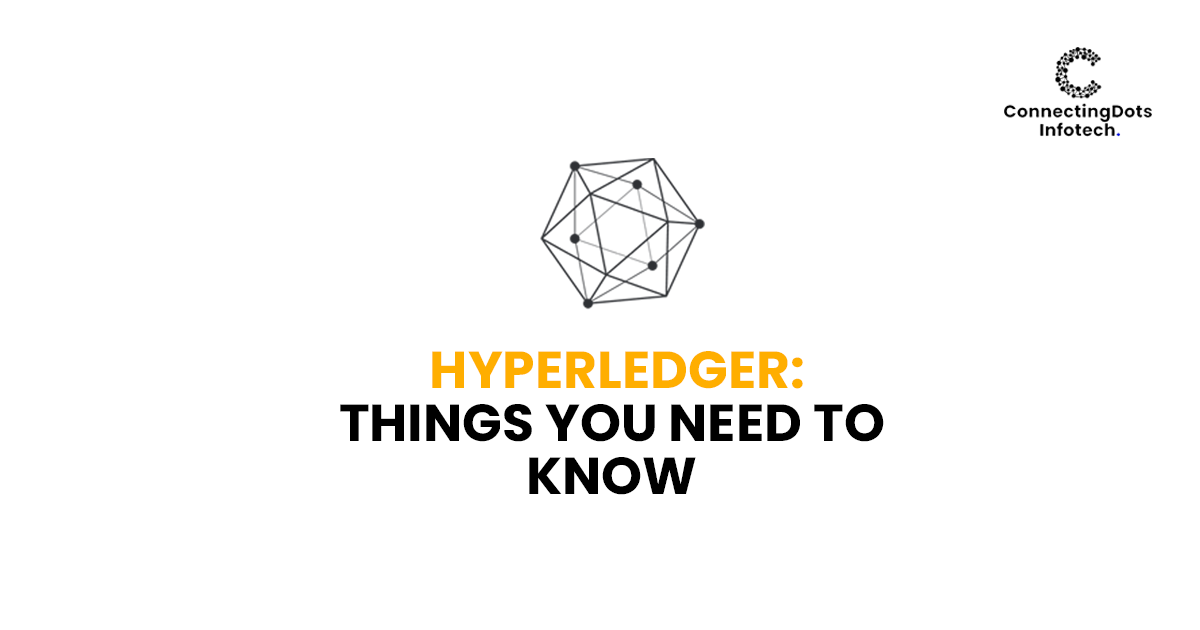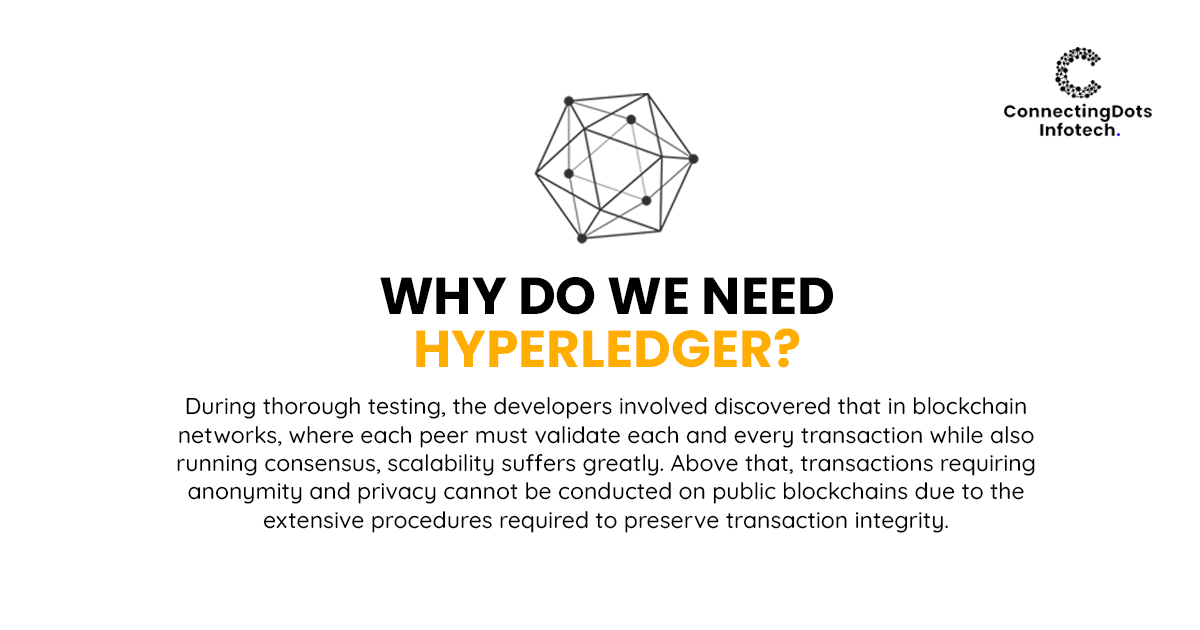Hyperledger: Things You Need to Know

Hyperledger is an open-sourced network of communities designed to support an ecosystem of Hyperledger-based technology providers and users focusing on blockchain-related use applications that will work across a wide range of industrial sectors. In this post, you will learn everything you need to know about Hyperledger.
What is Hyperledger?
Hyperledger is an open-sourced initiative that was designed to aid in the development of distributed ledgers based on blockchain technology. Hyperledger is a cooperative process to provide the frameworks, protocols, tools, and libraries required to build blockchains and related services.
Since its inception by the Linux Foundation in 2016, the Hyperledger initiative has received contributions from companies such as IBM and Intel, as well as Visa, American Express, Samsung, Microsoft, and blockchain companies such as Blockforce. Banking, the internet of things (IoT), supply chain management, manufacturing, and production-related disciplines are all included in the collaboration.
Hyperledger serves as a central point for several distributed ledger systems and libraries. With this, a company may, for example, employ one of Hyperledger's frameworks to optimize the effectiveness, performance, and transactions in their business operations.
Hyperledger facilitates the development of blockchain systems and applications by providing the necessary infrastructure and protocols. Hyperledger Greenhouse is used by developers to create business blockchain projects. Participants in the network are all familiar with one another and can engage in consensus-making procedures.
These layers are used by Hyperledger-based technology:
- A consensus layer that agrees on order and confirms whether the transactions in a block are accurate.
- A layer of smart contracts that processes and authorizes transaction requests.
- A communication layer responsible for peer-to-peer (P2P) message transfer.
- An API that enables other programs to interact with the blockchain.
- Identity management solutions validate users' and systems' credentials.
How does Hyperledger work?
It's a whole different matter on a Hyperledger-based network! The peers who are directly involved in the transaction are linked, and only their ledgers are updated about the transaction. Third parties who assist in the transaction only learn the precise amount of information they require thanks to network permissions and restrictions.
Assume Alice and Bob were carrying out their specific transaction over a Hyperledger-based network. She could look up Bob via an application, which would then query a membership service. Following membership validation, the two peers are linked and results are obtained. Both results must be the same in this two-party accord for them to be recognized. However, extra rules can be used in other transactions involving numerous participants. These produced transactions are now delivered to a consensus cloud for ordering before being committed to their individual ledgers.
Notable frameworks: Hyperledger Fabric and Sawtooth
Hyperledger Fabric and Sawtooth are two of the most well-known Hyperledger frameworks.
Hyperledger Fabric
This is among the most prominent Hyperledger projects. It is a permissioned blockchain architecture used for the development of blockchain-based businesses, software, and applications. The Hyperledger Fabric project was created in collaboration with IBM and Digital Asset. It offers a modular design that defines node responsibilities, smart contract execution, and adjustable consensus services. Fabric features include smart contracts and pluggable Hyperledger Fabric consensus methods. The fabric also supports other programming languages via module installation. Hyperledger Fabric is used for distributed ledger implementation projects.
Hyperledger Sawtooth
Intel has contributed a permission modular blockchain solution. Sawtooth is used by businesses to deploy, run, and construct distributed ledgers. It can assist organizations that are having difficulty dealing with blockchain technology. Dynamic Consensus, Proof of Elapsed Time (a form of consensus technique), Transaction Families, Parallel Transaction Execution (which permits the construction of individual chains), and Private Transactions are all Sawtooth characteristics. It also works with Ethereum smart contracts. Python, Rust, Java, Go, JavaScript, and C++ software development kits are also available. Sawtooth is designed for companies that require a permission and modular blockchain network.
Other Hyperledger tools and projects
Multiple projects and tools are now active or incubating on Hyperledger, which means they must meet certain exit criteria before being deemed active and production-ready. Among these projects are:
- Hyperledger Iroha: A blockchain framework for integrating into existing networks. Iroha has a modular architecture, control-based access, library access, and asset and identity management. It is utilized in industries such as finance, healthcare, and education.
- Hyperledger Indy: A framework designed to support decentralized identities. It includes components, tools, and frameworks. Self-sovereignty is also included, which secures all identity-based paperwork.
- Hyperledger Besu: An open-source Ethereum codebase capable of running on private permission systems as well as the Ethereum public network. The Ethereum Virtual Machine (EVM), consensus mechanisms, user-facing APIs, and tracking are all included.
- Hyperledger Caliper: A blockchain benchmarking application. A caliper is a tool for assessing the performance of blockchain installations. It does not, however, come with predetermined standards because different blockchain deployments may require distinct sets of standards.
- Hyperledger Explorer: A dashboard utility tool for monitoring, searching, and maintaining blockchain and associated data. It allows a company to audit nodes, blocks, transactions, and smart contracts. It also enables users to modify the code.
Why do we need Hyperledger?
During thorough testing, the developers involved discovered that in blockchain networks, where each peer must validate each and every transaction while also running consensus, scalability suffers greatly. Above that, transactions requiring anonymity and privacy cannot be conducted on public blockchains due to the extensive procedures required to preserve transaction integrity.
Assume Bob, who lives in India, wished to purchase chocolates from Alice in Switzerland. Alice chooses to sell her chocolates to Bob at a steep discount because they are old acquaintances. The issue here is that Alice distributes her items to a variety of markets and still requires them to purchase from her at conventional rates. Aside from that, many third parties are needed to execute the transaction to deliver the merchandise from Alice to Bob.
These third parties may be required to verify various aspects of the product such as quality assurance, logistics, payment verification, and so on. But they don't have to know about Bob and Alice's exclusive deal. Every ledger on a public blockchain network will be informed about the operation as miners validate and add transactions to the network.

Conclusion
Hyperledger has piqued the interest of world-renowned industry leaders keen to improve blockchain technology and aid those who are just getting started with it. Hyperledger's capacity to adapt blockchain concepts to a wider range of use cases ensures that it will be felt everywhere.
